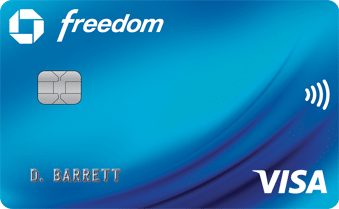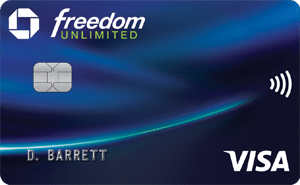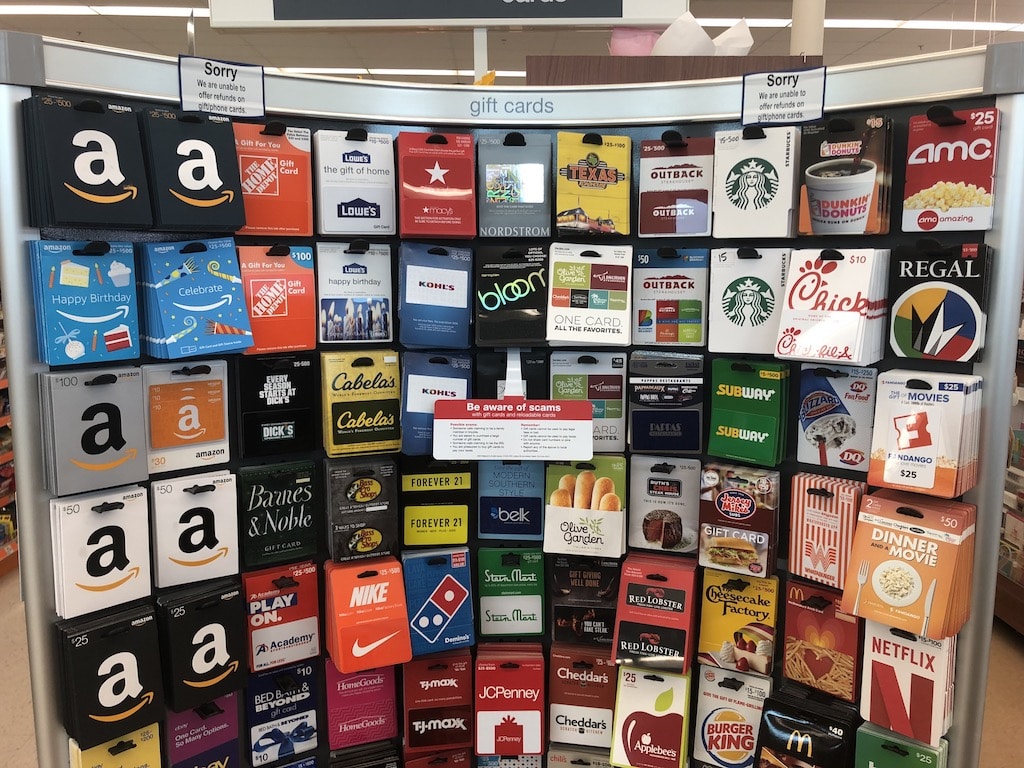The Chase Freedom and the Chase Freedom Unlimited are two of the most popular cash back credit cards with no annual fee. The cards have a lot of overlapping features but also have some very distinctive features that distinguish the cards from each other. In this article, I will highlight all of the major features of these cards and talk about which cards might be best for you and why.
Update: This offer is no longer available.
Tip: Use WalletFlo for all your credit card needs. It’s free and will help you optimize your rewards and savings!
Table of Contents
Sign-up Bonus
Chase Freedom

The standard sign-up bonus for the Chase Freedom is $150 cash back after spending $500 in the first three months after account opening. This is a pretty decent sign-up bonus for a cash back credit card with no annual fee. (Some similar cash back cards don’t even offer sign-up bonuses.)
Chase Freedom Unlimited

The previous sign-up bonus for the Chase Freedom Unlimited was $150 cash back after spending $500 in the first three months after account opening. However, with the new offer there is no sign-up bonus offered for the Freedom Unlimited. Instead, it offers a higher return on spend which I talk about below.
Overall, if you want up-front value you’ll want to go with the Chase Freedom card but if you’re okay with earning the rewards via spend over the long-run then the Freedom Unlimited can be a good fit (but see below).
Tip: If you really want a card with up-front value the Chase Sapphire Preferred is offering a new high offer of 60,000 points after spending $4,000 in the first three months after account opening. This is worth at least $750 in travel and can take you a long way.

Bonus categories
Chase Freedom
The Chase Freedom card earns 5% back on rotating categories each quarter on up to $1,500 worth of spend. This means that if you can max out the quarterly categories, it will be possible for you to earn up to 7,500 points each quarter (or $75 cash back) on bonus spend. Everything else will earn 1% back.
There are a lot of different bonus categories that the Chase Freedom offers and you can take a look at all of those categories over the years below and read more about what counts for each category here.
2014 Calendar
- Quarter One (Q1): Grocery stores, Movie theaters, Starbucks
- Quarter Two (Q2): Restaurants, Lowe’s
- Quarter Three (Q3): Gas stations, Kohl’s
- Quarter Four (Q4): Amazon.com, Zappos.com, Department stores
2015 Calendar
- Quarter One (Q1): Grocery stores, Movie theaters, Starbucks
- Quarter Two (Q2): Restaurants, Bed Bath and beyond, H&M, Overstock.com
- Quarter Three (Q3): Gas stations, Kohl’s
- Quarter Four (Q4): Amazon.com, Zappos.com, Audible.com, Diapers.com
The final quarter with Amazon.com was special this year because it allowed you to earn 10% back on Amazon which was fantastic.
2016 Calendar
- Quarter One (Q1): Gas stations, Local commuter transportation
- Quarter Two (Q2): Grocery stores, Wholesale clubs
- Quarter Three (Q3): Restaurants, Wholesale clubs
- Quarter Four (Q4): Department stores, Drug stores, Wholesale clubs
2017 Calendar
- Quarter One (Q1): Gas, Local commuter transportation
- Quarter Two (Q2): Grocery stores, Drug stores
- Quarter Three (Q3): Restaurants, Movie theaters
- Quarter Four (Q4): Walmart, Department stores
2018 Calendar
- Quarter One (Q1): Gas, Telecommunications, Mobile payments (Chase pay, Apple pay, Samsung pay, etc.)
- Quarter Two (Q2): Grocery stores, PayPal, Chase Pay
- Quarter Three (Q3): Gas stations, Lyft, Walgreens
- Quarter Four (Q4): Department stores, Wholesale clubs, Chase Pay
Being able to earn a 5% back in these categories can be extremely lucrative but there are a couple of issues.
For some people the $1,500 limits in spend each quarter are just too low. Some people might spend a whole lot on dining and groceries for example and would like to maximize that spend each year in higher increments. Those people might look into other options that are focused on dining and grocery store rewards like the American Express Gold Card.
Other people might have the opposite issue and struggle to max out these categories or even come close to maxing out the categories. It really just depends on your spending habits but sometimes people really struggle to maximize categories like gas, drug stores, department stores, etc. Purchasing gift cards is usually the answer to this problem but is not always possible for people.
If you are not able to optimize the bonus categories, your earnings could be lower than they would be with the Chase Freedom Unlimited since you would be earning additional points on other categories.
And finally, you have to remember to activate your 5% earnings each quarter.

Chase Freedom Unlimited
The Chase Freedom Unlimited usually earns 1.5% back on all purchases but with the new offer it earns a whopping 3% back on all purchases up to the first $20,000 spent in your first year. Getting 3% back on all purchases up to $20,000 in spend is pretty good but it’s also not the very best offer available like this.
A comparable option would be the American Express Blue Business Plus. This card earns 2X on all purchases up to $50,000 in spend each year. So the earning rate is a little bit less but you can earn this up to $50,000 dollars in spend and you can do this every single year. And just like the Chase Freedom Unlimited, this card comes with no annual fee although it is a small business credit card.
Another option could be the Citi DoubleCash which allows you to earn a 2% back on all purchases. Getting 2% back on all purchases is really great for a no annual fee card but it does come with a couple of caveats. The first is that you must pay off your Citi DoubleCash bill in order to get the full 2% cash back. And the second is that you can only earn cash back with this card and with other cards like the Chase Freedom Unlimited you can earn points that you can transfer out to travel partners.
Chase Freedom Unlimited 3% offer
In addition to choosing between the Unlimited and the Freedom you might also have to choose between Freedom Unlimited offers. The new offer with 3% back on all purchases up to the first $20,000 spent can potentially offer you much more value than the standard $150 bonus if you spend a lot.
For example, if you were to spend $20,000 and your first year then you would earn 60,000 Ultimate Rewards which would be worth at least $600. However if you earned the standard $150 bonus with 1.5% back on all purchases, then you would only have about 45,000 Ultimate Rewards after spending $20,000.
But now let’s say that you spent under $10,000. So let’s say that you were going to spend $8,000 over the course of your first-year. With the old offer you would and up with 27,000 points. But with the new offer you would only have 24,000 points. So if you were planning on spending under $10,000 the old offer could potentially offer you better value. (There’s no word on if and when this offer will be coming back it.)
Which is better?
Choosing between the Freedom and the Freedom Unlimited really comes down to what type of spending you want to earn bonus points on. If you don’t mind keeping track of different quarterly categories and have a good idea of what types of categories you would spend over the course of a year then the Chase Freedom could be a perfect fit for you.
On the other hand, if you don’t think you want to keep up with changing categories the Freedom Unlimited could be a better choice. Also, if you are a very high spender the Freedom Unlimited could be a much better option, especially if a lot of your spending is in categories that are not quarterly bonus categories for the Freedom.
I will say that if you think the $1,500 spending limit on the bonus categories is too low then sometimes you can get multiple Chase Freedom cards and essentially double that spend limit each quarter. You can do this by product changing other cards like the Chase Sapphire Preferred.

Ultimate Rewards
Both of these Freedom cards will earn you Ultimate Rewards that will be in the form of cash back. However, if you have a premium Chase credit card like the Chase Sapphire Preferred or the Chase Sapphire Reserve, then you can get even better value for your points.
Tip: Use the free app WalletFlo to help you travel the world for free by finding the best travel credit cards and promotions!
Travel partners
First, with premium Chase cards you can transfer your Ultimate Rewards out to various travel partners. When you transfer your points out to programs like United, Southwest, or Hyatt, you will usually get much better value for your points.
Here is a full list of all of the different transfer partners.
Chase Ultimate Rewards Airlines
- Aer Lingus
- British Airways Executive Club
- Flying Blue (Air France/KLM)
- Iberia Airways
- Singapore Airlines KrisFlyer
- Southwest Airlines Rapid Rewards
- United MileagePlus
- Virgin Atlantic Flying Club
Chase Ultimate Rewards Hotels
- World of Hyatt
- IHG Rewards Club
- Marriott Bonvoy
For example, we have used out Chase points to fly business class and first class all over the world while netting over 10 cents per point in some cases. That’s aspirational value but the point stands that you’ll get better value utilizing transfer partners.
Travel portal
Also, you can get better value for your points if you utilize the Chase Travel Portal. With a credit card like the Chase Sapphire Preferred, you can redeem your points at a rate of 1.25 cents per point and with a credit card like the Chase Sapphire Reserve, you can redeem your points at a rate of 1.5 cents per point. What is so great about utilizing these portals is that you don’t have to worry about things like award inventory or special blackout dates.
For many people they don’t like to book hotels through this travel portal because they are fearful that they will lose out on their elite status benefits (upgrades, free breakfast, etc). However, when booking hotels I have been able to receive my elite benefits so that is a huge plus.

No minimum redemptions
One of the great features about both of these cards is that there are no minimums for redeeming your cash back. Many other cards might limit you to minimum redemptions of something like $25 and some even $100. So this just makes it a lot easier to use your points.
Credit score needed
The good thing about both of these credit cards is that they are some of the easiest Chase cards to get approved for. For example, it is completely possible to get approved for these cars with credit scores under 700. In fact, I’ve even heard of people getting approved with credit scores around 650.
With that said, Chase likes to see you with some decent credit history before they approve you for their cards. So if you have nonexistent credit history or a very thin credit profile, you might want to establish a little bit more credit history before you apply. Read more about the credit scores needed for the Chase Freedom here.
Another tip is to open up a bank account with Chase which could be a savings or checking account. That will help to establish your relationship with Chase which could improve your approval odds. It would also be a good idea for you to check out my article on the Chase Reconsideration Line.
Free credit score
Both of these credit cards will offer you the feature known as Chase Journey. This is a service that allows you to check your credit score for free. This can help you to keep an active eye on your credit score and also monitor anything that hits your credit report.
However, you should note that Chase Journey uses the Vantage credit model. This is a model different from FICO and sometimes the scores can be vastly different. Since most credit card issuers use the FICO model score, Chase Journey doesn’t always provide you with the most useful credit score.
0% APR
Both of these cards offer you 0% APR intro periods. This makes them good candidates for people who need to make large purchases but are not quite able to completely pay off their credit card balance in a month.
If you are really looking for one of the best 0% APR cards then you might want to look at the Chase Slate. That card does not offer much in terms of rewards but if you are trying to get a 0% interest rate with purchases or balance transfers that card is about as good as it gets.
Purchase protection
With both of these cards you will be able to take advantage of the benefits known as purchase protection. This covers your new purchases for 120 days against damage or theft up to $500 per claim and $50,000 per account.
Purchase protection is a great perk but some cards offer you limits up to $10,000 per claim like the Chase Sapphire Preserve. Therefore, you might want to consider those other options if purchase protection is truly important to you.
Extended Warranty
Both Freedom cards extend the time period of the U.S. manufacturer’s warranty by an additional year, on eligible warranties of three years or less. If you really want optimal extended warranty coverage, you might think about going with American Express cards which are known to have better warranties since they can extend your warranty up to two additional years.
Annual fees
Both cards come with no annual fees. It’s not that uncommon for a cards like this to come with no annual fee. There are numerous other 5% back cards that offer no annual fee and you also have cards liked the Capital One® Quicksilver® Cash Rewards Credit Card that offer 1.5% cash back.
With that said, it is still significant that you can transfer these Ultimate Rewards to your other cards and get significantly more back in value than 1.5% or 5%. So from that perspective, it is actually pretty special that these Freedom cards don’t have annual fees.
Foreign transaction fees
Both cards come with foreign transaction fees of 3%. Because these cards come with 3% transaction fees you may want to have another option in your wallet for international purchases. Other cards like the Quicksilver don’t come with foreign transaction fees.
Chase 5/24
Both of the Chase Freedom cards are subject to the 5/24 rule. This means that if you have opened up five or more accounts in the past two years you will not be approved for the cards subject to certain exceptions. Because of that rule, you will want to prioritize getting these cards if you are interested in the rewards.
But if you are cutting it close with 5/24 I think it is a much better move to go for a card like the Chase Sapphire Preferred because there is a lot more potential for value there.
Final word
Both of these cards can be great fits for your points earning arsenal. Personally, I have both of these cards and use them quite frequently to rack up tons of Ultimate Rewards each year. Since both of these cards are subject to the 5/24 rule, they are not that easy to get for some people. But if you can pick up both of them then I would definitely look into doing that to complete the Chase Quadfecta.
Daniel Gillaspia is the Founder of UponArriving.com and the credit card app, WalletFlo. He is a former attorney turned travel expert covering destinations along with TSA, airline, and hotel policies. Since 2014, his content has been featured in publications such as National Geographic, Smithsonian Magazine, and CNBC. Read my bio.

